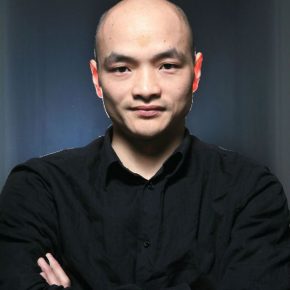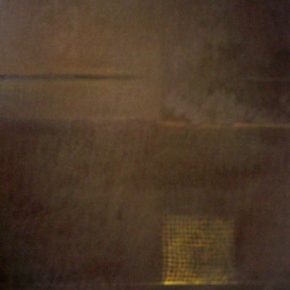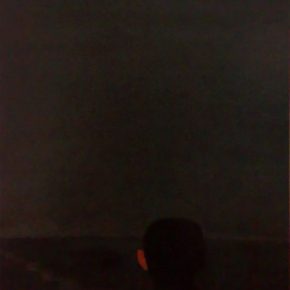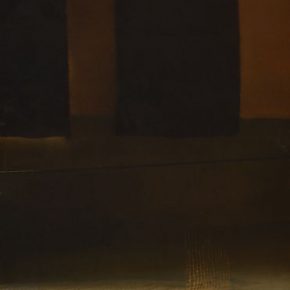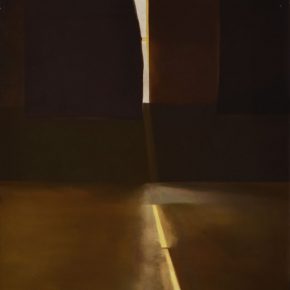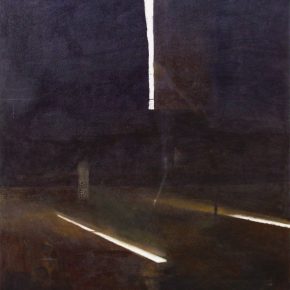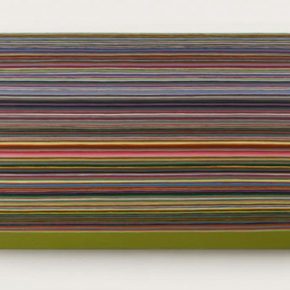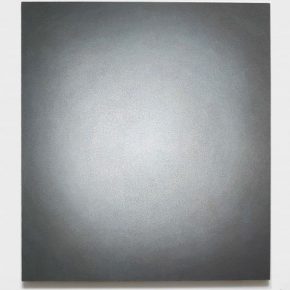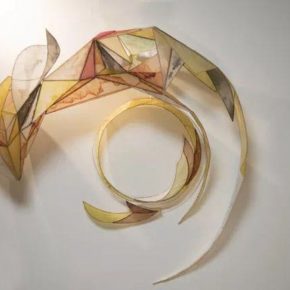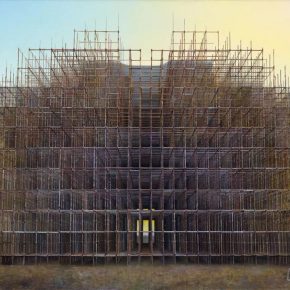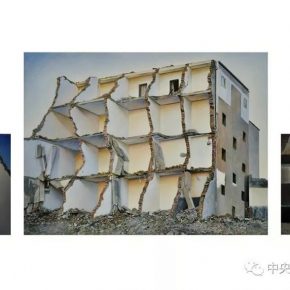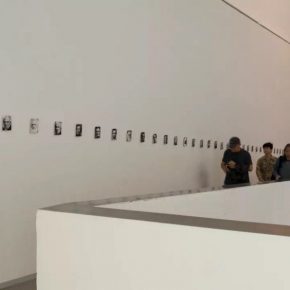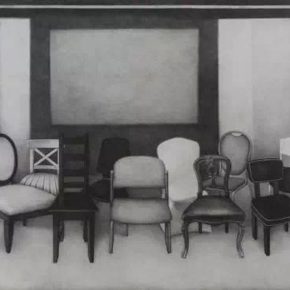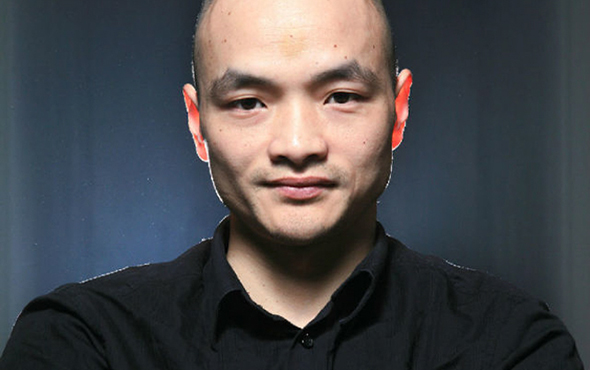
2018 is the centennial birthday of China Central Academy of Fine Arts. The celebration has been ongoing for a while. After the first phase of activities to honor the ancestors' traditions by featuring Xu Beihong: Living Art Forever and the exhibition of permanent collections of the Museum of Fine Arts, we have entered the second phase – offering awards for the school anniversary and showing the public the achievement of China Central Academy of Fine Arts with graduate and undergraduate students' graduation artwork exhibition. From May to June, the whole university has been bursting with the lively atmosphere of the graduation season. The vigorous large-scale centralized exhibition on campus has attracted numerous visitors, and the graduation exhibition has also aroused interest and discussion among the art circle as well as the whole society.
As a "ceremony" for every student who has gone through the life and study of China Central Academy of Fine Arts to step into society, the graduation exhibition contains several years of accumulation and precipitation, painstaking efforts and feelings. At the graduation exhibition, CAFA also launched a number of valuable activities. This time, young artists, designers, architects, and scholars who emerged from China Central Academy of Fine Arts were invited to jointly "look back at the graduation exhibition" based on the present one, to think back one’s own graduation story, tell the observation of today's graduation exhibition, and even share some of their own growth experience for the young students who are about to leave the school.
Artist Wang Guangle, who went to the Fine Arts School Affiliated to China Central Academy of Fine Arts at 16 in 1992, graduated from the First Studio of the Oil Painting Department of China Central Academy of Fine Arts in 2000. After leaving school, because of Terrazzo and Coffin Paint and other series of works, he became an important representative of 70s oil painters. The reason why Wang Guangle was invited to talk about the graduation exhibition seems very clear. First, the origin of his famous series of works more or less began with his undergraduate graduation creation which became a "milestone" in Wang Guangle's growing career.
More importantly, Wang Guangle's slightly rebellious spirit may be just one of the characteristics of the artist's free and independent thinking. As you know, he was in the First Studio of the Oil Painting Department, by then focusing on realistic oil painting from the Renaissance. But Wang Guangle took the risk of being "out" of his own "abstract creation". The mentor denied this several times, then-director Jin Shangyi also gave a denial in the beginning. It sounded like the whole thing was suffering, but he said he was optimistic inside. These abstractions are not incomprehensible. In the end, he won the highest "Director's Award" with his graduation creation of that year.
It can be said that his graduation creation made him famous in the first place. Let's hear how he understands the graduation creation, how he breaks out of the box to present his ideas and get people to accept them, and how he observes the 2018 graduation season as an alumni in the Oil Painting Department.
Interviewee: Wang Guangle, Artist and 2000’ Graduate of Oil Painting Department
Time and location: End of May, 2018. Exhibition Hall of CAFA Art Museum
Interview reporter, arrangement: Zhang Yizhi
Interview proofreading: Wang Guangle (emphasis on retaining colloquial text)
Translated by Wei Yuluo and edited by Sue/CAFA ART INFO
In fact, I haven’t run off-track. My work has been all around the "transcendental into perceptible".
CAFA ART INFO: As an alumni who graduated more than ten years ago, and also a representative artist now, what was your state when you graduated from China Central Academy of Fine Arts?WANG: I went out of my way to take a look at the collection of my graduation creations that year. There is a sentence in my five couplets: "through nothingness, to embody the sense of reality of objects who are not directly experienced." I guess I just wanted to make sure what I said was consistent with what I drew. This sentence implies that "what we see is a representation", which is an attempt to express my sense of "time" in an imitative philosophical tone. Luckily, it more or less accurately describes the thinking of painting at that time – painting makes "transcendental" into something that can be felt. From this point of view, I haven’t run off-track. My work has been all around the "transcendental into perceptible". Transcendence in general is something that rational thinking can grasp, but in particular, it can be experienced in art by feeling. So the graduation creation was very important to me and it was very consistent with my art creation after that. I'm not looking for anything else, always looking for a form for a particular idea, and it's all about "time." The method of work has not changed either. My work has been an external form and a sensible substance of this concept.
Although I had not entered society, some basic thinking had already begun. Thinking about what I'm really interested in? Can I express this more directly? Perhaps people didn’t see the First Studio classical techniques in my paintings. In fact, deep down, Western classical painting since the Renaissance is divorced from religion, towards the rational painting of human beings. Mastering this technique means you are learning to think rationally. It was the reason that made me believe there was a tradition of "expressing true feelings" in the teaching of China Central Academy of Fine Arts, so I followed this and painted it. I still don’t know how I got the Director’s Award. I just know that professor Chao Ge, Liu Xiaodong was very fond of my paintings. That prize, of course, encouraged me in turn. Along this line of the graduation creation, it developed into the current context. To me, it was a seed, and the motif didn't run away. What changed was only the form and appearance.
CAFA ART INFO: I heard your graduation creation caused quite a stir. Why don't you tell us about the story of your graduation at that time?WANG: At that time in the First Studio of the Oil Painting Department, the graduation experience was full of twists and turns. My mentor was Director Sun Weimin. He denied my manuscript three times. If it doesn't pass, it means I can't graduate. However, I said I learned rational thinking in the First Studio. I believed that my manuscript was subjective. So I kept painting regardless. At that time, there were few students in the studio. The teacher was the parent, and they were very concerned about students, but the students were very afraid of them. In the end, Director Jin Shangyi came to visit the peasant house I rented. He also maintained a negative attitude towards the paintings I had finished. He thought that since I had studied for four years, I had to show what I had learned. You know, to reflect the oil painting that is tangible, colored, a feeling of volume, but my paintings couldn’t demonstrate this.
But I felt that I had not only mastered these things, but also presented them. For example, does the painting have no color? I think it does. Does it have no volume? Space presents volume. No shape? It is tangible, and this shape can also be expanded into "form" to understand.
Unfortunately, because of "fear", there was no "teacher-student dialogue" in this process. This conversation was just my inner drama. The teacher's negation was negated by me through my inner dialogue. It should be the analysis of "personal discourse and a power discourse" by Liu Xiaofeng, a cultural Christian, that inspired me. The remaining question was how to give up what is "identity", such as being unable to graduate, not having a degree, or not allowing the paintings to be exhibited. Rational judgment suggests that I can’t care about these external things, I can only think of my "subject" situation, focusing on the mood of the creation, not the situation of the “identity”.
Creation must be the creation of the subject, and is the spirit of its own discovery.
CAFA ART INFO: So how did you suddenly move from realistic training to painting in a slightly surreal space? Is there any basis for this series of creations?WANG: My grades were not outstanding in the studio, but I had always studied and trained with a very studious attitude. I think technology as an exercise is very necessary. For example, you want to understand the Western perspective, to understand what the volume of oil painting is and the space or color relationship is. As a student, you must have a good grasp of what teachers taught. But beyond that, I was curious about the relationship between exercise and creation, including how to draw for the graduation creation. Draw what? What is the relationship between the graduation creation and creation? Past graduates’ graduation creative models made me tired. Generally you need to find a social theme, and then discuss the central idea with the mentor, and then use superb techniques to show it. However, I think that painting or creation is a very rare and independent personal work. From conception to operation, presentation is a very complete and independent thing. "Graduation" intervention is very destructive to this.
Afternoon 3 – 5 pm still has a physical object, painting the "No. 2 Factory" multi-functional hall during China Central Academy of Fine Arts’ transit school era. First of all, of course, is that I already had something in my mind that I wanted to present, and I was waiting for a form of touch. Suddenly, one sunny afternoon, I walked into the huge dark empty multi-functional hall my eyes then adapted to the darkness, through curtain which never closed tightly, an oblique light hit the ground. This is this scene that touched me. I immediately used the camera to take in the scene, but my technology was poor. It was seriously underexposed, which gave the series of painting space to create.I've been thinking for a long time about what creation is, like Van Gogh, why he can form a painting of a broken shoe or sunflower. The thrill I get is that he is a natural artist, a passionate artist, that his emotions ignite his brushes and his strokes ignite objects which can elicit sympathy from everyone.
I don't think I can do that whatsoever. I don't have that gift. But I realize I create something deeper. Creation must be the creation of the subject, is the spirit of its own discovery. Perhaps because of my interest in religion and philosophy, I have always been concerned with my own spiritual form. I was a "nihilistic" before graduation, but at that time I couldn’t understand the philosophical nihility. It was probably just like being "bored".
CAFA ART INFO: Now that you're interested in religious philosophy, how does this affect your graduation creations?WANG: First I was more interested in Christianity, but I was not a Christian and there were already many forms of preaching at China Central Academy of Fine Arts, such as the family church. I've been there once and I can't stand it. Maybe artists are allergic to form and I can't stand church either. Later, I saw some Cultural Christian books and found them quite interesting.
The biggest understanding I had at that time was that faith was not an empirical thing at all, because the empirical world has to prove it. For example, what it normally does, what’s the use, what’s the result. You have to prove it to me and then I’ll do. Faith is not like this. “You do” is this itself. The result is not dispensable. You already have a priori. Cause and effect is thus reversed. These understandings have the effect of compensating my spiritual satisfaction, a materialistic world view from a student who had no material possessions. This is of great benefit to painting, so I didn't care much about the result of drawing this picture. The work itself has been confirmed by this idea.
I hope that we can constantly examine ourselves, examine what art demands of artists.
CAFA ART INFO: As you say, undergraduate creations are the starting point for almost all of your current artistic creative themes. Can you elaborate on what inspired you and what work you have continued to do?WANG: After graduation, I drew five more Afternoon 3 – 5 pm. Of course, the technique was quite different from the graduation creation. There were even some very naturalistic paintings, very specific scenes. Maybe there was a beam of light on the broken brick wall. Or a beam of light on the ground. At that time, I was intoxicated with a specific time. There was once a beam of light that fell on the terrazzo floor, and it was too hard to draw that terrazzo floor. It’s a long time to draw. I repeated a pattern, but it wasn't really repetition, because each particle was different. The time it took to process that painting is different from the specific afternoon time that I wanted to present. The former time is more abstract. It’s a time in our mind, and the latter is a time that can be felt. I later tended to the abstract time. After the tenth painting of Afternoon, in 2002, I simply removed this beam of light, because there was no way to make every painting with a beam of light in one direction or another. I started simply painting terrazzo floors. This kind of processing also causes the image factor in the painting to strip away less and less. This is the beginning of the Terrazzo series.
By 2006, the understanding of time touched something very real. Thinking of grandpa putting a coffin in his house when he was a child, I was deeply touched by this. It contains many levels of meaning. One is the limitations of individual life, and the meaning of death to the living and the dead. In addition, it is also a reflection of the traditional forms of civil society in the past. So I painted repeatedly on a canvas. The thickness of the marks left by the brush forms the shape of the accumulation of time and forms a more contemporary visual language painting, so another series called Coffin Paint began. These two series of works are still in progress. Terrazzo series is still in the painting, because you continue to draw, the picture is constantly changing, although very slowly.
CAFA ART INFO: As an artist for so long, do you have a new understanding of the significance of your undergraduate realist oil painting or what direction it will develop? Can you talk about these ideas in conjunction with this year's graduation exhibition?WANG: Historically speaking, photography has actually "squeezed" painting. Painting has undergone great changes. It completed its own scientific work, and left the function of providing empirical knowledge to photography. Therefore, painting can be transcendental, can talk about the aesthetic. I saw a sketch of a chair (Modern Syndrome – Different Poses) drawn by a student in the Foundation Department, and I think it's very powerful. This sketch is very good, that is to say, realism is not a problem. And in fact, realism is too difficult now, because it is very narrow, and you have to have your own things when you are drawing realistically. This is very contradictory. This thing is called language. And language is something that you have to be truly gifted in, like Van Gogh, or achieving the subject's consciousness through rationalizing and you have to distinguish it from something in history to make a sense of it. Therefore, how to achieve the difficulty of language is a big problem, but the problem is not in "realism."
I like Zhang Huairu's Appearance along the ramp on the first floor. The author programmed a hundred celebrity portraits to be imperceptibly subtle. The title was accurate. It may be difficult to judge a work's artistic standard at present. I think it has to be a combination of the person, the work, and its "idea". A Chinese painting Floating Life like a Dream by Jing'en is also good.
Compared to installations and sculptures, I personally prefer to look at paintings. They feel friendly. Painting on the natural four borders of the world is easier to understand. At the graduation exhibition, space or new media art actually interferes with each other because of space constraints and you don't know where the boundaries are. Painting though has the limitations of the border, yet it also has advantages.
CAFA ART INFO: Share some experiences of an artist’s profession for young graduates?
WANG: Then let me tell you something about my personal artist experience. When I graduated from Fine Arts School Affiliated to China Central Academy of Fine Arts, I considered myself an artist. After graduating from China Central Academy of Fine Arts, I felt that I was still an artist, but I laughed at the artist who graduated from the high school. When I graduated from China Central Academy of Fine Arts five years ago, I thought it was ridiculous to want to become an artist when I just graduated. Now, having graduated 18 years ago, it still feels ridiculous to look back at me ten years ago. So I think the graduation creation of China Central Academy of Fine Arts benefited from my self-consciousness in art and life which began in my sophomore year at the university. In fact, there is a saying in philosophy that “a life that has not been examined is not worth living”. Fortunately, the examination that began at that time did not make my roots grow in the sand, so I can continue to grow to this day. But I can't guarantee that in the future. I hope we can constantly look at ourselves and what art demands of artists.


